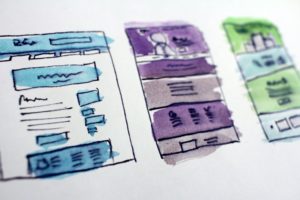In today’s online world, having a professional presence can make or break a business’ success and your website is an essential component to your digital strategy. Websites as a whole handle large audiences with a wide range of needs, so they’re not necessarily designed to drive specific conversions. That’s the domain of landing pages.
Why are Landing Pages Useful?
 A landing page allows you to direct site visitors to targeted pieces of your site, aiming to capture leads and turn viewers into customers. Whether a visitor enters your site via a landing page organically or through paid channels, landing pages are meant to engage visitors with a singular focus call-to-action (CTA), providing users with incentives that encourage them to want join your company’s communication stream. This typically involves them providing their contact info via a form on the landing page.
A landing page allows you to direct site visitors to targeted pieces of your site, aiming to capture leads and turn viewers into customers. Whether a visitor enters your site via a landing page organically or through paid channels, landing pages are meant to engage visitors with a singular focus call-to-action (CTA), providing users with incentives that encourage them to want join your company’s communication stream. This typically involves them providing their contact info via a form on the landing page.
These purpose-built pages are more flexible than your homepage, allowing you to tailor your message as well as your call-to-action to a specific audience. A strong landing page can boost your conversion rates, narrow in on a specific audience, and give insights as to what kinds of content yields the most engagement on your site.
Crafting a useful landing page can be tricky, but here are some techniques to help you develop a landing page that increases conversions and helps you achieve business goals.
1. Prominent Headlines
Your headline is the first thing visitors see when they land on your page and can quickly determine whether the viewer stays or bounces. This first impression should offer visitors something promising, enticing them to move through your landing page. When you craft headlines with clarity, relevance and empathy, visitors are more likely to convert.
2. Text Formatting
 The formatting of your text is just as important as what you have to say. Your content should be formatted in a way to make it easier for visitors to scan and get the information they need. Think white space, smaller chunks of information and limited use of various font sizes, type styles or colors. Great copy can be formatted in many ways, including:
The formatting of your text is just as important as what you have to say. Your content should be formatted in a way to make it easier for visitors to scan and get the information they need. Think white space, smaller chunks of information and limited use of various font sizes, type styles or colors. Great copy can be formatted in many ways, including:
- Bullet points
- Quotations
- Visual sections
- Short sentences and paragraphs
3. Enticing CTA
Your call-to-action (CTA) is a crucial component of your landing page, as it compels visitors and entices clicks. Most websites may have a straightforward “Buy here” or “Submit” strategy, but there are plenty of better, and far more creative, CTA text you can use to boost conversion rates.
Take into consideration these tactics when creating your CTA buttons:
- Color: your CTA button should stand out with a striking contrast, yet complementary, color to the rest of the page design.
- Size: if your CTA button is too small, visitors may not notice it; if it’s too big, it will appear out of place. Consider the various ways visitors may be viewing your site. Your CTA should fit nicely for phone screens as well as larger screens.
- Stay above the fold: place your CTA in the line of view before the need to scroll for when visitors are ready to engage.
- Test, test, test: A/B test your CTA button location and text to provide a better insight of what works for viewers.
4. Catering to SEO
Implementing SEO best practices will make your landing page rank higher in search engine results and help reach your target audience. Optimizing your landing page with SEO will improve your organic traffic results, rather than relying on solely on paid traffic.
These are some SEO basics to implement on your landing page:
- Keyword analysis
- Long enough copy for Google crawlers (minimum recommended: 300-word count)
- Build backlinks for credibility
- Monitor page load speeds
Landing pages have a lot to offer, so creating strategies to develop and build effective landing pages can open your company up to a wider audience who receive targeted, relevant information. Companies may have different needs for different types of landing pages. Take the time to find what works for you.
